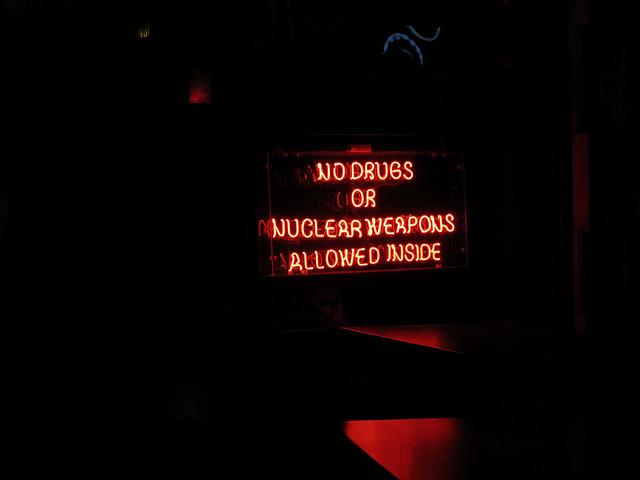Speculation is rife in Washington that President Barack Obama may announce several key changes to US nuclear policy in his final address to the UN General Assembly next month. Obama is looking to advance his 2009 Prague agenda but the prospect has stirred rearguard lobbying by several European and Pacific allies and opposition from many lawmakers.
One item on Obama’s agenda is a no first use (NFU) policy. Of the nine countries with nuclear weapons, China is the only one to have adopted a pure NFU, declaring it would never be the first to use nuclear weapons. Their dual role is to deter a nuclear attack and to retaliate with nuclear weapons if so attacked and so prevent nuclear blackmail. India has a qualified NFU policy that extends the role of nuclear weapons to retaliate against any weapon of mass destruction (nuclear, chemical, biological).
The US and Russia hold 93% of the world’s stockpile of nuclear weapons. China and India have but tiny fractions. Yet they feel confident enough in their small deterrent forces to adopt NFU policies. The US stockpile is hugely bigger, far more sophisticated and lethal, and backed by massive superiority in conventional forces, cyber-capabilities, technological edge, and economic, diplomatic and alliance strengths.
An NFU policy arouses instinctive scepticism in the strategic community that at best it is an empty gesture, and at worst it increases the risk of war by weakening deterrence. Yet it would have profound symbolic value and significant practical implications. It would encourage a shift away from high-risk doctrines and weapons deployments. General James Cartwright, former commander of the US Strategic Command, and Bruce Blair point out such a policy would permit the US to dismantle land-based strategic missiles in the US and withdraw tactical nuclear weapons from Europe. Because these are highly vulnerable to enemy attack, say the two, they are weapons of first-use and too risky for second-use. The removal of tactical weapons also removes the need for deployment on the forward edge of the battlefield, launch-on-warning postures, and pre-delegation of authority to battlefield commanders.
In 2014 China and India called for negotiations on a no-first-use convention among the world’s nuclear powers. If, following the US example, NFU were adopted by all nuclear-armed states, the policy could become the centrepiece of a global nuclear restraint regime. This would strengthen strategic stability and mute crisis instability, with the enemy no longer tempted to strike first to pre-empt a feared US first-use. NFU would also cement the boundary between nuclear and conventional weapons and further entrench the norm against the use of nuclear weapons, counteracting Russia’s efforts since the Ukraine crisis to relegitimise the role of nuclear weapons.
President Obama has rightly noted that ‘As the only nation ever to use nuclear weapons’, the US ‘has a moral obligation to continue to lead the way in eliminating them’. Increased confidence following a global NFU convention would reduce tensions between nuclear-armed states and contribute to a climate conducive to further progress on nuclear disarmament.
Japan and South Korea are among US allies to have conveyed deep reservations. Prime Minister Shinzo Abe, fearing that NFU would lower the threshold for China and North Korea to consider conventional attacks, reportedly lobbied the head of the US Pacific Command directly. Yet Michael Krepon is right: allies who believe the US would be the first to use nuclear weapons in any conflict involving another nuclear power, thereby inviting nuclear retaliation, are leaning on a fictional ‘psychological crutch’.
A first-use policy made strategic sense during the Cold War as a means of deterring an attack on Europe by a Soviet Union that enjoyed massive conventional superiority. The limited contemporary utility of nuclear weapons rests on the certainty of nuclear retaliation, not in first-use. In effect first-use posture is a Cold War deterrence legacy whose logic breaks down once nuclear weapons are used, and the empirical reality is transformed from peacetime deterrence by nuclear weapons to fighting an actual war with nuclear weapons. A nuclear umbrella may offer protection of a powerful ally, but any actual use against a nuclear rival ceases to be protective and instead morphs into the most catastrophically self-destructive security guarantee imaginable.
The only rational strategy is to threaten but not actually use nuclear weapons first. But if carrying out the threat would be national suicide, the threat cannot be credible and a non-credible threat cannot deter. Thus what is important, and China and India have internalised, is not a first-use policy, but credible second-strike capability. Once that is attained, an NFU policy, backed by appropriate nuclear force posture and deployment patterns, is a critical step back from nuclear brinksmanship, shifting the onus of nuclear escalation on the adversary.
This is why over forty former leaders, army and air force chiefs, nuclear scientists, and experts from fourteen Asia–Pacific countries—including US allies Australia, Japan and South Korea, and nuclear-armed states China, India and Pakistan—have issued a rare and possibly unprecedented joint statement encouraging the US to adopt NFU and called on Pacific allies to support it.
Interestingly, the last two Australian defence white papers may have quietly accepted the implications of this. The 2013 paper noted the role of US ‘extended deterrence’, not extended nuclear deterrence, in providing a stable regional security environment. The 2016 document confirmed Australia’s reliance on US nuclear forces ‘to deter nuclear attack on Australia’. This might explain why Australia is not among the allies said to be advocating against NFU.
